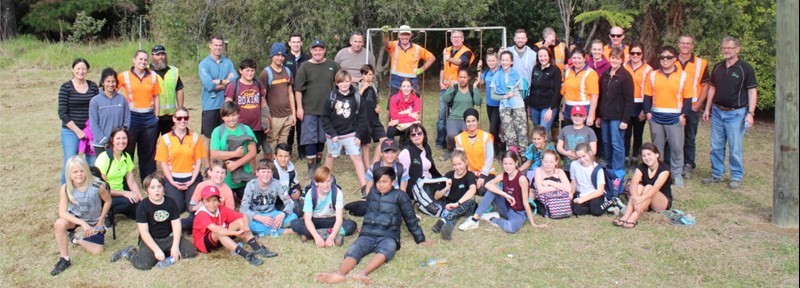
Wetland planting grows knowledge and food
A collaborative effort between Waikato Regional Council, Rayonier Matariki Forests and Opoutere School has seen nearly one thousand native trees planted in the Papa Marie Estuary wetland.
A collaborative effort between Waikato Regional Council, Rayonier Matariki Forests and Opoutere School has seen nearly one thousand native trees planted in the Papa Marie Estuary wetland.
Part of this significant wetland area is already under predator control and weed management and after Rayonier Matariki Forests recently completed harvesting a portion of Tairua Forest it decided to enrich the natural regeneration by planting the riparian strip in natives.
The company bused down staff from its Auckland office and invited Opoutere School to join in the day’s planting and BBQ.
Principal of Opoutere School, Jethro Dyer, said it was a wonderful opportunity for the Green Gold Enviro-school to serve the community and add to its outdoor learning experience.
“We jumped at the chance to get involved. The group of Year 6, 7 and 8 children really enjoyed adding to the biodiversity of the area and being able take some of their learnings out into the environment.”
The children brought a selection of native plants they had grown in the school nursery to add to the cabbage trees, manuka flax, coprosmas, kowhai, karaka and kaihikatea that were planted on the day.
Rayonier Matariki Forests Bay of Plenty regional manager, Andy Warren said he hoped that the new plantings would go some way towards encouraging some of the rare and endangered birds that once used to frequent the area.
“The goal is that in eight to ten years’ time, this will be a haven for some of the threatened bird species. While we were planting, kaka and a spotless crake were sighted so that’s a great start.
“We look forward to partnering with the school again for future planting events as well as water monitoring, carrying out bird counts and native tree identification.”
